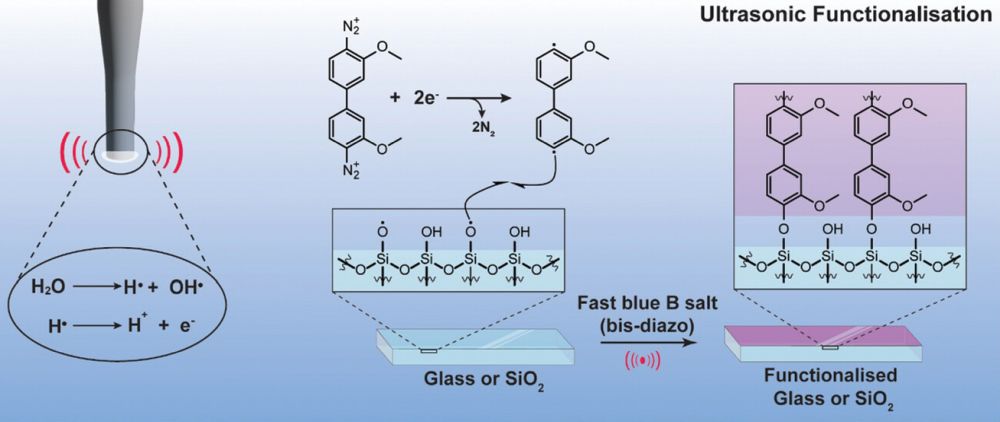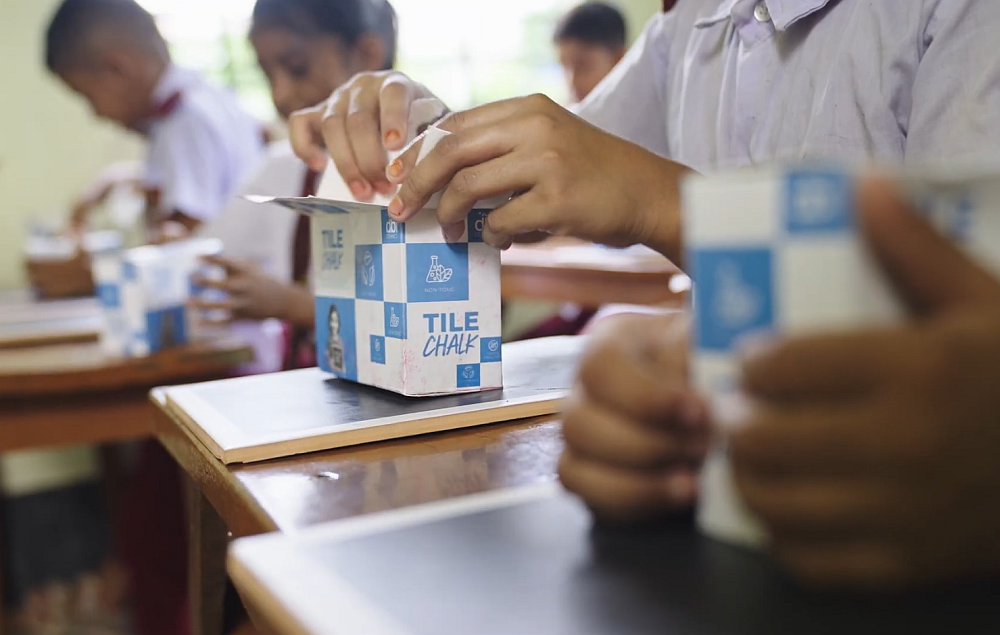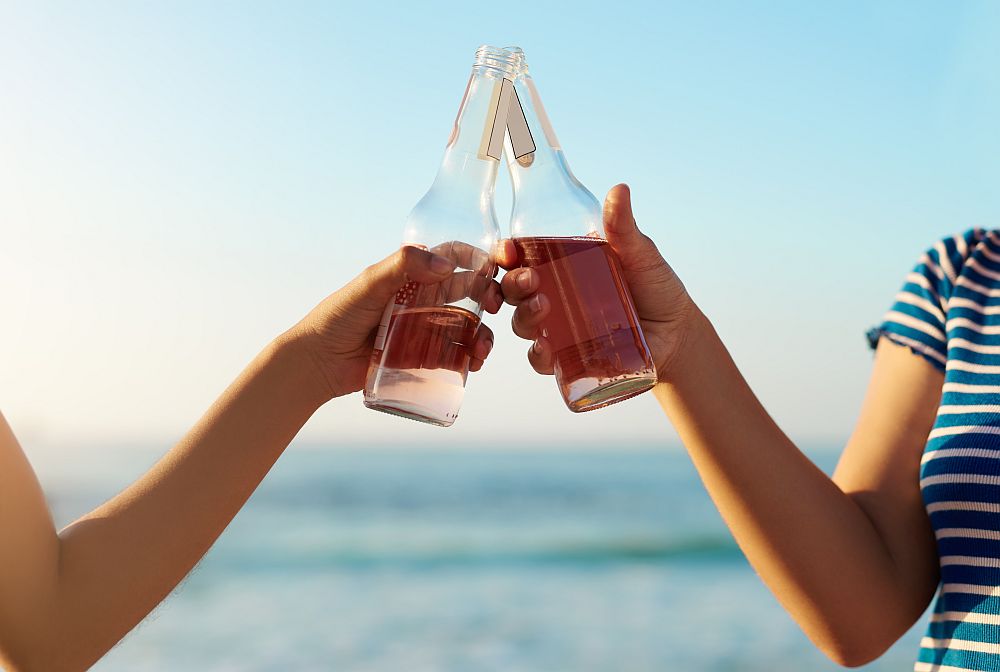
[Image above] Schematic of the ultrasonic fabrication of diazonium films on glass. Credit: Li et al., Advanced Functional Materials (CC BY 4.0)
Glass has served as containers, windows, and adornments for millennia, helping improve the lives of countless generations. But as our world has grown bigger, brighter, and louder with the rapid expansion of populations and cities, glass must now offer many more functionalities beyond basic transparency.
Consider, for example, the growing market for water-repellent glass. Since the 1970s, automobile manufacturers have functionalized car windshields with hydrophobic coatings to improve visibility during rainy conditions. With the increasing frequency and severity of storms, the need for water-repellent windshields becomes even more relevant.
Hydrophobic windshield coatings typically are created using a dual-layer sol-gel process. This process, which works well for large, curved surfaces, involves the chemical reaction of alkoxysilanes with water. This reaction results in the formation of fluorinated silanes and other organic molecules, which are responsible for the coating’s water-repellent properties.
However, the Si–O–Si bonds in these molecules can be susceptible to hydrolysis, i.e., reactions with water, under specific chemical environments or other certain conditions. If these molecules undergo hydrolysis, the water-repellent properties can diminish and lead to degradation of the coating over time.
The possibility of hydrolysis, along with other environmental pressures such as abrasion and sunlight exposure, means most commercial water-repellent coatings last only a few weeks or months. Thus, “there is a need for more robust and environmentally friendly methods to functionalize glass,” researchers write in a recent open-access paper.
The researchers are led by Nadim Darwish, associate professor and ARC Future Fellow at Curtin University in Australia. In their paper, they investigate a novel coating method for water-repellent glass based on diazonium salts.
Diazonium salts are high-energy materials that are commonly employed to grow covalently bonded thin films on conductive surfaces. This process involves electrochemical reduction of the diazonium group, generating aryl radicals that react with the surface to form controllable polymeric films.
Traditionally, electrons for the reduction reaction have been supplied using electrodes, an approach that does not work for electrically insulating surfaces, such as glass. So, the authors of the recent study decided to explore using ultrasound-induced cavitation as an alternative electron source.
As they explain in the paper, “Cavitation involves the formation of microbubbles in a liquid under the influence of sound waves. When these bubbles collapse, they generate localized high temperatures and pressures, creating conditions suitable for initiating chemical reactions that are otherwise difficult to achieve.”
For example, water splitting may be triggered by the bubble collapse, producing hydrogen and hydroxyl radicals. The hydrogen radicals can be spontaneously reduced to protons, “which may serve as a source of electrons for reducing diazonium salts,” the authors write.
They attempted this ultrasound-driven reduction of diazonium salts on soda lime silicate glass surfaces. The process resulted in the formation of a thin organic polymeric film on the glass surface, which was bonded via Si–O–C bonds rather than the more hydrolysis-prone Si–O–Si bonds seen in the sol-gel approach.
Because of the more stable bonding structure, this water-repellent coating is “ideal for real-world applications where reliability and durability are key…[such as] clearer windshields in heavy rain, self-cleaning skyscraper windows, and solar panels that stay dust-free,” says first author Tiexin Li, research associate at Curtin University, in a press release.
In addition, the researchers discovered an unexpected benefit of the modified glass beyond its water-repellent properties—the ability to attract bacteria, fungi, and algae.
“This [behavior] is very exciting as we can tailor glass properties for specific uses … For example, the coated glass can help bind yeast in brewing, capture bacteria in wastewater filtration systems, or act as a chemical barrier to microorganisms in air filters,” says second author Zane Datson, faculty member in the School of Molecular and Life Sciences at Curtin University, in the press release.
The researchers are now seeking industry partners to test and scale up the technology, particularly in the automotive, construction, and environmental sectors.
The open-access paper, published in Advanced Functional Materials, is “Sonochemical functionalization of glass” (DOI: 10.1002/adfm.202420485).
Learn more about the history and evolution of car windshields in the May 2025 Bulletin, which publishes online next Wednesday!
Author
Lisa McDonald
CTT Categories
- Glass
- Manufacturing
- Material Innovations


